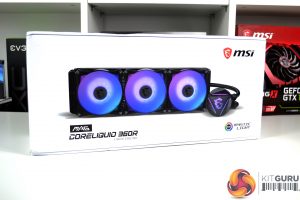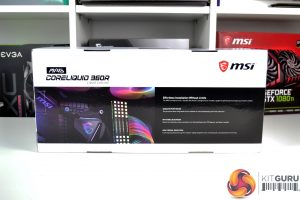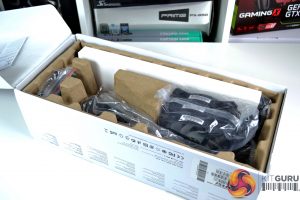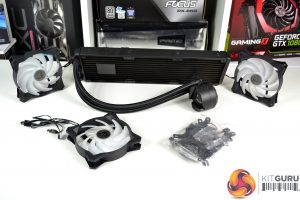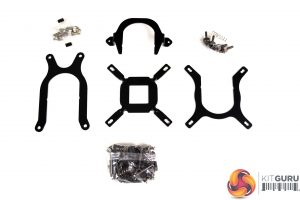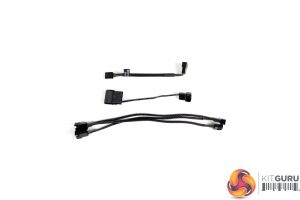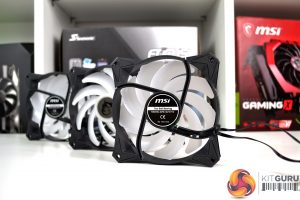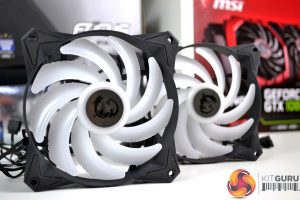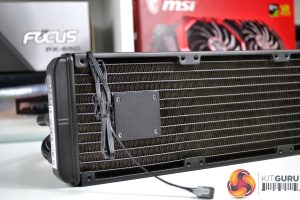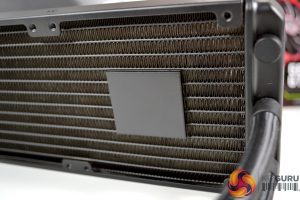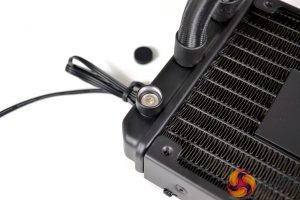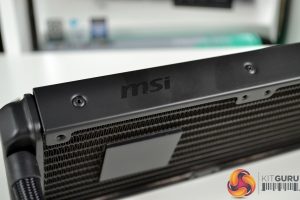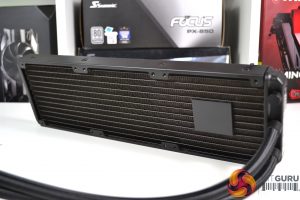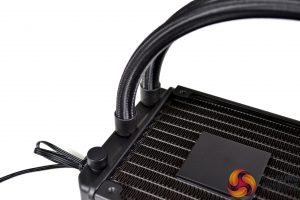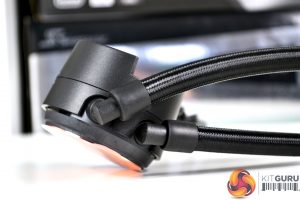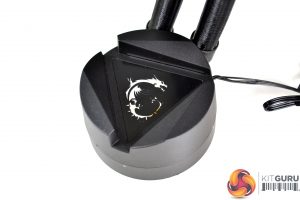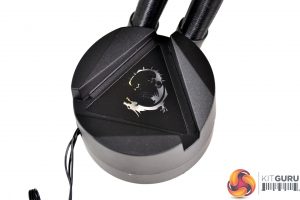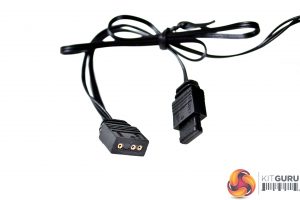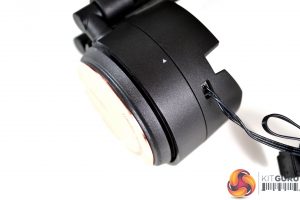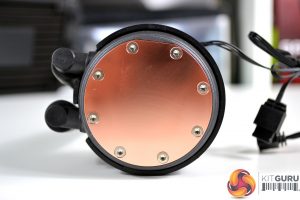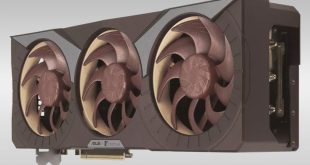MSI MAG CoreLiquid 360R is packaged in a simple cardboard box with a modern white background that accentuates the large image of the cooler on the front. On the rear of the box is a section that details the MAG CoreLiquid keys features and on the side of the box is a comprehensive list of specifications.
Inside the box, all the contents are protected by a simple cardboard crate, which is typical of AIO cooler packaging. Found inside the box are three 120mm fans, a ziplock bag filled with various screws, fixings, mounting brackets, cables and a small tube of thermal compound, as well as a user guide and, of course, the cooler itself.
With the contents of the ziplock bag emptied out on to the desk, we can see that there are three separate upper mounting brackets required for installing the cooler on Intel and AMD platforms, a backplate for Intel installation, various standoffs for each CPU socket type, a bag full of mounting springs, spacers and screws, along with a three-way fan splitter, a Molex to 4-pin power cable and a 4-pin noise reducing fan adaptor cable.
Three 120mm fans bundled with the MAG CoreLiquid 360R are labelled with a model number that suggests they are supplied along with the cooler by Apaltek, this same fan model number has also cropped up before in the Silverstone Tundra AIO series too. The fans are equipped with nine opaque curved blades, anti-vibration rubber mountings with an MSI dragon logo sticker on the central hub and feature a PWM speed range of 500-2000 RPM.
The most interesting highlight of this AIO cooler is the pump mounted radiator, it has been a while since we have seen a mainstream AIO liquid cooler featuring this design. The pump is positioned towards the tubing side of the radiator in the centre, which will no doubt have some effect on airflow and radiator surface area, so it will be interesting to see what effect this has on thermal performance if any.
Another point of interest with the radiator is what looks like a fill port next to the tubing inlet/outlets and concealed by a rubber grommet which is easily removable by hand. Along with the pump that is also accessible by removing some Torx screw, this fill port potentially means that the cooler could be drained, flushed and refilled for maintenance, whether this is what it is intended for is another question.
In addition to these unconventional features, the radiator looks very similar to units found in AIO coolers from other manufacturers. The whole radiator is covered by a smooth satin black coating which gives it an understated appearance and along the top and bottom of the radiator are fan mounting brackets riveted in place with MSI logos on each side.
At the radiator side, tubing is fixed in position, there is no rotation or angle adjustment. At the CPU block, the tubing is equipped with articulating 90-degree elbow fittings to allow for rotational adjustment to accommodate the various orientation the CPU block can be installed to the motherboard.
Another feature of the CPU block is the top cover with an MSI dragon logo that can be illuminated with RGB lighting. The top cover can also be rotated 270-degrees in 90-degree increments, so the MSI dragon logo will be positioned facing the correct way around regardless of the orientation the CPU block is installed.
Since there is no pump inside the CPU block housing, the block is rather compact compared with other AIO coolers. There are no power cables connected to the CPU block, only and RGB splitter cable that allows the RGB lighting from the fans to be connected, and then plugged into a 5v 3-pin ARGB motherboard header to control the RGB lighting effects of both the CPU block and fans in synchronisation.
A groove around the CPU block housing is used to slide and retain the upper mounting bracket into position, without the need for any fasteners to secure it. At the base of the CPU block is a circular microchannel thermal transfer plate with a high quality looking smooth machined surface. The size of the thermal transfer plate is large enough to cover the IHS of mainstream desktop processors but will obviously not offer full coverage of AMD Ryzen Threadripper heat spreaders, so it may not be the optimal solution for these platforms.
 KitGuru KitGuru.net – Tech News | Hardware News | Hardware Reviews | IOS | Mobile | Gaming | Graphics Cards
KitGuru KitGuru.net – Tech News | Hardware News | Hardware Reviews | IOS | Mobile | Gaming | Graphics Cards


